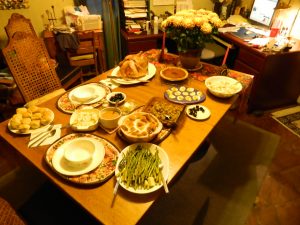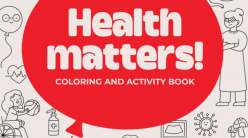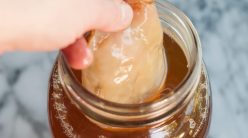
Ever wonder what makes a turkey timer pop up? What’s the difference between a yam and a sweet potato? How can you make bones rubbery? I’ve rounded up ten fun ways to incorporate science in your turkey day.
- Learn with turkey timers! Here’s a simple explanation of the science behind turkey timers. (Extension: take apart a turkey timer and/or follow their instructions to reuse one.)
- Learn the chemistry of Thanksgiving foods. This “Cooking with Chemistry” article talks about what the antioxidants in cranberries do for us, what makes turkeys brown during cooking and more dinner-related science.
- Learn the difference between a sweet potato and a yam. It turns out there are a lot! This page compares everything from country of origin to amount of Beta carotene to plant group, plus includes lots of recipes. (Extension: prepare both and compare taste and properties yourselves.)
- Test for starches. How starchy is that Thanksgiving dinner? You can use iodine to test for starch like this.
- Make some bendy bones! Save your turkey bones to make them rubbery with vinegar like this.
- Eat your chemicals! The American Council on Science and Health has this list of not-so-tasty-sounding chemicals that are present in traditional Thanksgiving foods. More furan derivatives, anyone? (Extension: look up definitions of the chemicals and then try to match up which foods would contain which chemicals.)
- Do some popcorn science. Historians have taught us that popcorn wasn’t really at the first Thanksgiving, but it’s still neat to find out what makes popcorn pop and how scientists are genetically breeding better popcorn kernels. (Extension: compare a cheap popcorn brand with a more expensive one and see if the volume of popped popcorn and number of “old maids” is different between the two.)
- Does turkey really make you sleepy? Scientific American and TLC Cooking separate fact from fiction.
- Learn turkey physics! About.com has all sorts of physics-related turkey info here, including how some types of plastic shrink-wrap on turkeys form particle accelerators and the science of cooking turkeys.
- Try more Thanksgiving science. eHow has three more fun activities– comparing which dishes hold heat better for side dishes, testing stain removal techniques on cranberry stains, and figuring out the best heat-holding materials for gravy boats.
Have a happy Thanksgiving!
***
Want to support our site?
Treat yourself to something on Amazon!
You deserve it, and it will help us out.
It’s a win-win! 😉
This site is an affiliate for Amazon.com. Purchases made through this link will earn us a small commission, at no extra charge to you.
***
This article originally appeared on examiner.com





